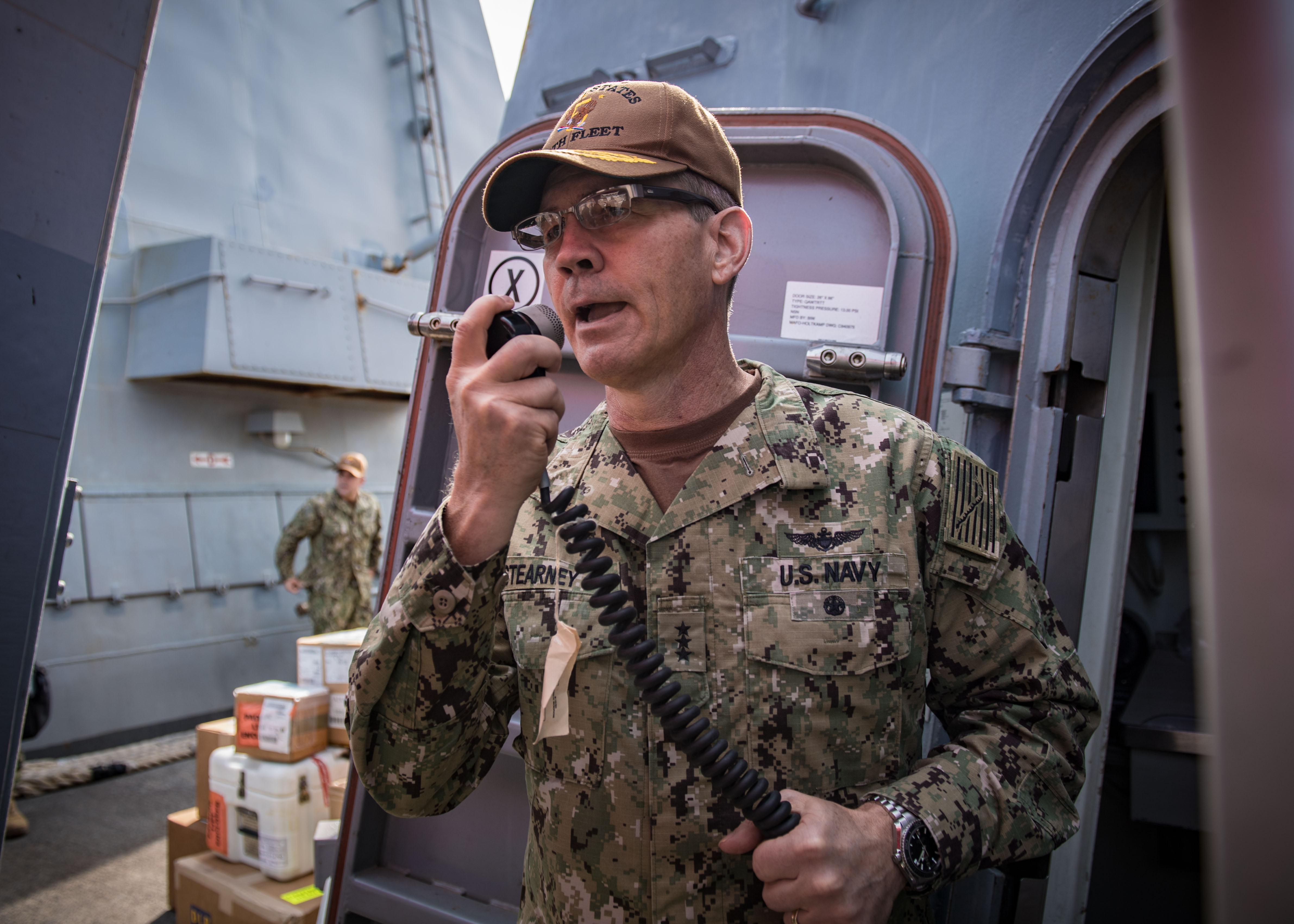
THE PENTAGON — The death of the former commander of U.S. Navy forces in the Middle East has been ruled a suicide, according to a February Navy report obtained by USNI News on Wednesday.
The preliminary inquiry into the Dec. 1 death of Vice Adm. Scott Stearney, led by NCIS agents in Bahrain, determined that the former 5th Fleet commander had killed himself in his quarters.
“Stearney was found deceased in his personal residence located in Janabiya, Bahrain. Per materials reviewed, the cause of death was determined to be [redacted] suicide[redacted],” read the Feb. 4 investigation.
“The timeline of events and witness statements support this conclusion. [Redacted] indicating his intent to commit suicide. No information uncovered during the subsequent NCIS investigation, including multiple interviews and forensic analysis of VADM Stearney’s electronic devices, contradicted this finding.”
Navy Times was first to report on the investigation’s findings.
The report recommends Stearney’s death be found in the line of duty, a determination that would allow his next-of-kin military survivors benefits and that no further inquiry was needed.
The current U.S. 5th Fleet concurred in a Feb. 12 endorsement.
“I have reviewed the subject report of the investigation and find that the information contained therein is sufficient to make a line of duty determination in the subject case,” wrote Vice Adm. James Malloy in the endorsement.
“I concur with the findings, opinion, and recommendation in the subject report. I specifically find that VADM Scott Stearney’s death was incurred in the line of duty and not due to his own misconduct.”
Questions left with U.S. 5th Fleet spokesperson Cmdr. Joshua Frey as to why the command waited four months to acknowledge the determination of the investigation were not immediately returned. In April, an NCIS spokesperson told USNI News the investigation into the death was still open.
The final determination on Stearney’s death comes as the Department of Defense is seeing an increase in suicides across all services in parallel with the rest of the country.
“Suicide across the military is increasing, and it’s increasing in society as well,” Capt. Tara Smith, a subject matter expert assigned to Navy’s Suicide Prevention Branch (OPNAV N171), told USNI News in April.
“Unfortunately, we are a reflection of society and we take sailors from all walks of life, and suicide across the nation has been increasing.”
The Navy’s 2018 active duty suicide rate of 20.1 per 100,000 service members is in line with what the other service branches experienced and was a slight decrease from the Navy’s 2017 rate of 21.4 per 100,000 service members, according to the data from the service, USNI News reported in April.
Stearney had previously served as director of operations at U.S. Central Command in MacDill Air Force Base, Fla. He was a 1982 graduate of the University of Notre Dame. Stearney was designated a Naval Aviator in April 1984, and flew more than 4,500 hours, accumulating more than 1,000 carrier-arrested landings while flying F/A-18 Hornet and F/A-18E/F Super Hornet strike fighters.
His served at sea aboard USS Theodore Roosevelt (CVN-71), USS George Washington (CVN-73) and USS Dwight D. Eisenhower (CVN-69). Ashore, Stearney served as tactics instructor and readiness officer at Navy Fighter Weapons School (TOPGUN).
“Along with the U.S. Naval Forces Central Command and Combined Maritime Forces team, I mourn the loss of an incredible Navy leader, and I miss the camaraderie and wise counsel of my friend,” Malloy said in a Wednesday written statement provided to USNI News.
Suicide Prevention Resources
The Navy Suicide Prevention Handbook is a guide designed to be a reference for policy requirements, program guidance, and educational tools for commands. The handbook is organized to support fundamental command Suicide Prevention Program efforts in Training, Intervention, Response, and Reporting.
The 1 Small ACT Toolkit helps sailors foster a command climate that supports psychological health. The toolkit includes suggestions for assisting sailors in staying mission ready, recognizing warning signs of increased suicide risk in oneself or others, and taking action to promote safety.
The Lifelink Monthly Newsletter provides recommendations for sailors and families, including how to help survivors of suicide loss and to practice self-care.
The Navy Operational Stress Control Blog “NavStress” provides sailors with content promoting stress navigation and suicide prevention:
NavStress social media:
Facebook: www.facebook.com/navstress
Twitter: www.twitter.com/navstress
Flickr: www.flickr.com/photos/navstress





